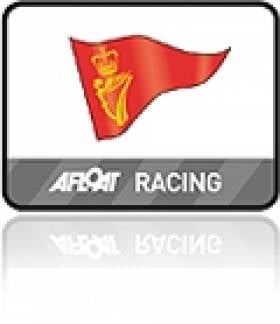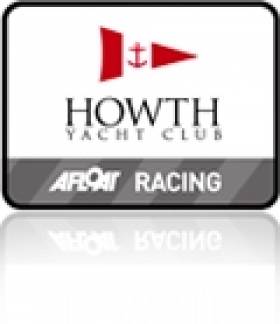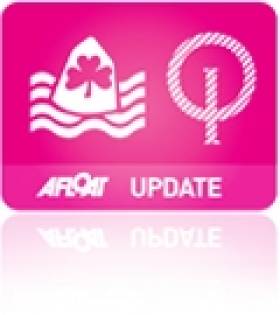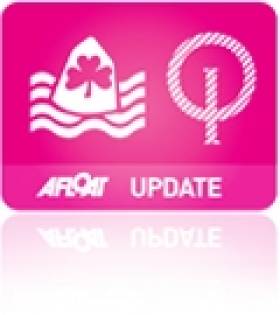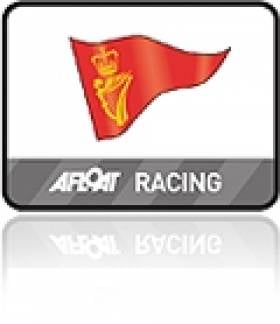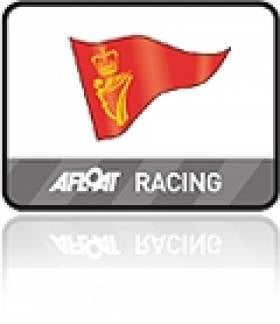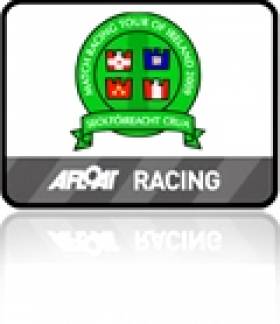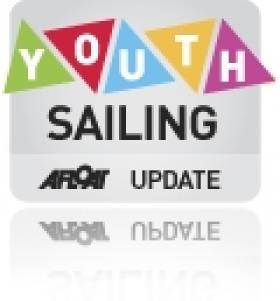Displaying items by tag: Royal Cork YC
Laser Training Starts at Royal Cork
Following a detailed briefing on the Club's Autumn and Winter schedule, Thomas Chaix outlined the Irish Sailing Association programme for the coming year. This includes club, regional and academy training options available designed to prepare the fleet for the first major of next year - the Munsters in Baltimore at Easter.
Irish Teams Third and Fifth in New York
After 3 very intense days of international competition at the Dennis Connor International Yacht Club Challenge, the Irish teams consisting of Royal Cork Yacht Club finished 3rd, Howth Yacht club finished 5th overall beating some very talented opposition including the two local Manhattan Yacht Club teams.
The event was sailed in a fleet of J24's and the RCYC boat was skippered by Stefan Hyde and the Howth Boat by Emma McDonald.
In fact if it was not for a penalty after a collision in race 4 (Under Regatta rules, if a collision occurs, both boats have to do turns no matter who is in the right / wrong) and the cancellation of race 7 on the last beat due to a approaching thunderstorm - podium positions for both teams could have beckoned.
The regatta was sailed in the very busy waters of the Hudson river in New York City which along with the challenges of avoiding commercial traffic, some of the strongest currents that the crew have ever experienced had to be negotiated in varied winds from 5knts on the opening day to 30knts plus during approaching thunderstorms on the final day. The 3rd Irish team; Wexford Harbour Yacht and Tennis Club finished in 10th place.
The event was won by the team from Switzerland - Societe Nautique Rolloise followed one point behind by USA - Southern Yacht Club and then a fantastic 3rd place by the Irish team from Royal Cork skippered by Stefan Hyde.
It is tradition on presentation night that each team presents to the team that finishes behind them in the final results a humourous prize.
4th place Austrian team presented the HYC team with "Lederhosen".
Howth Yacht Club also presented Commodore Michael Fortenbaugh of Manhattan Sailing Club and Dennis Connor (Americas Cup Hero) with HYC Burgees.
A fantastic event in a wonderful city that certainly promoted international goodwill through friendly competition.
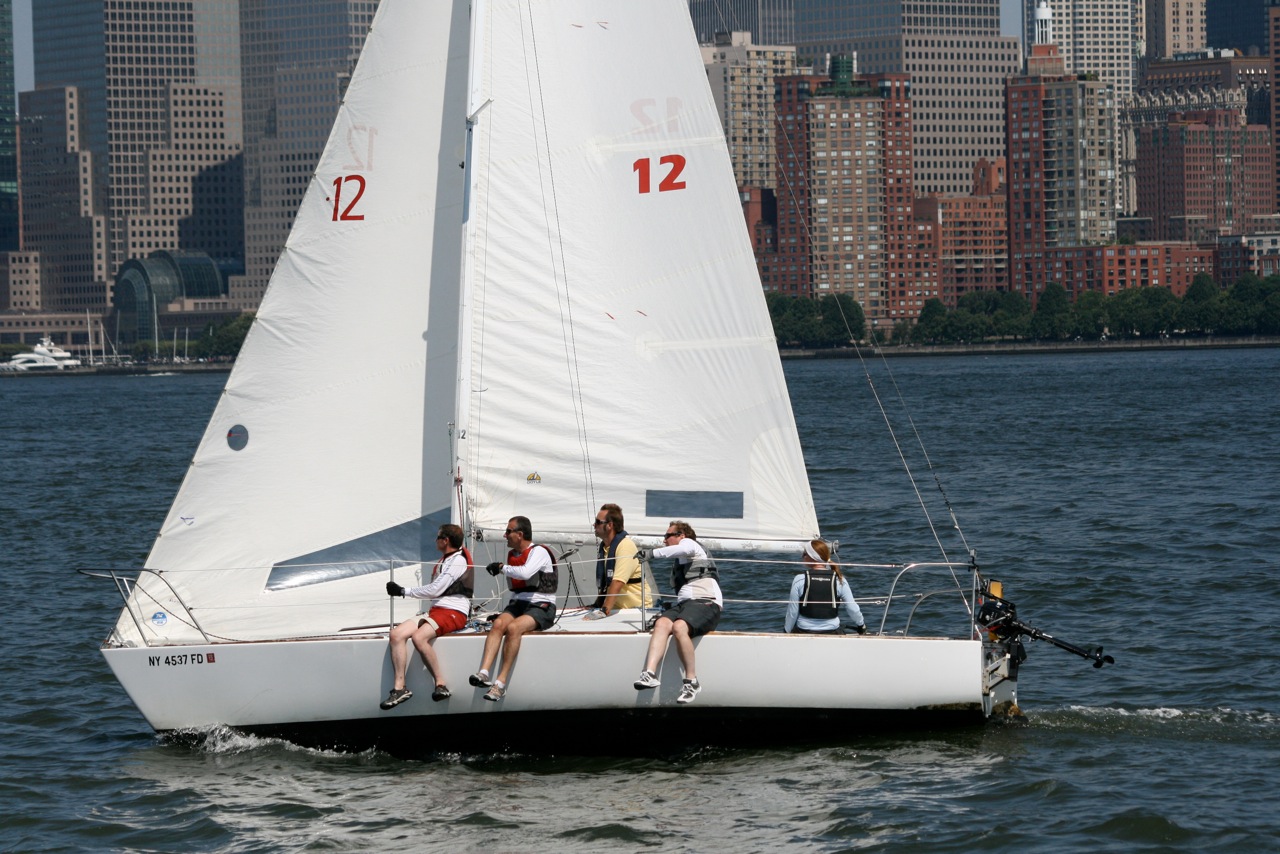



Sailing Mourns Loss of Two Stalwarts
Royal Cork 1, 2 and 3 at Optimist Nationals
Two more races were sailed today at the Optimist National Championships in Waterford Harbour Sailing Club but a third race did not happen due to combination of strong winds and poor visibility. Royal Cork Yacht Club are dominating the top positions in this event so far
Provisional Results after 7 races:
Seniors: 1st Peter McCann RCYC, 2nd Patrick Crosbie RCYC.3rd John Durcan RCYC.
Juniors: 1st Daire Cournane RCYC, 2nd Daniel Whiteley, PDC, UK. 3rd Daniel Labrouche UK.
Royal Cork's Peter McCann Takes Early Lead at Oppy Nationals
The 3 sponsored Irish Optimist Nationals got underway today in Dunmore East in County Waterford. A total of 234 boats raced two races in light to moderate North West breezes, remaining steady for the day. Provisional results after 2 races:
Senior: 1st Peter McCann, RCYC, 2nd Aran Hollowell, UK.
Junior: 1st Daire Cournane, RCYC/KYC; 2nd Fergus Flood, HYC.
Regatta: 1st Michael O'Suilleabhain, KYC, 2nd Amy Carroll.
Photos below by Noel Browne
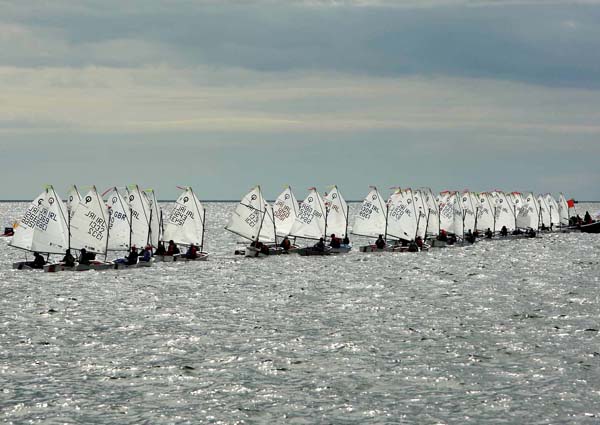
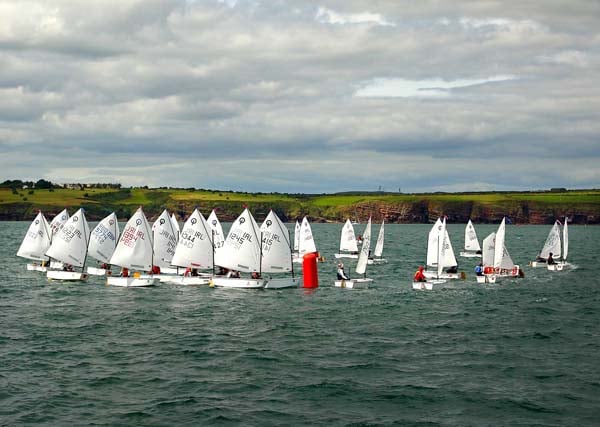
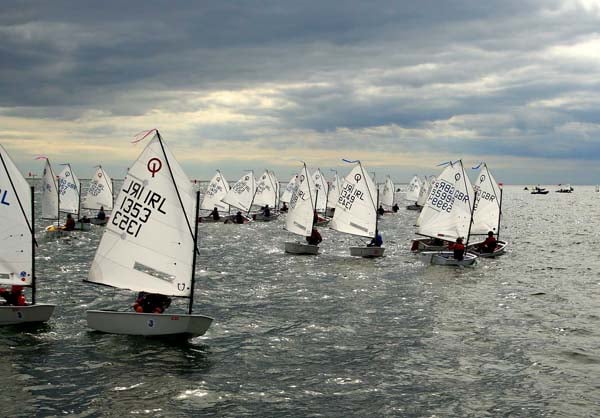
More on the forum HERE
HM Yachts League Photo Gallery Now Online!
Bob Bateman's photos from the HM Yachts sponsored Royal Cork Cruiser League is now online HERE.

Good Turnout for HM Yachts League
The first in the seven race series of the HM Yachts August/September League took place at Royal Cork last night. Competitors were given a boat start from Corkbeg and beat to the Cage in a good south westerly breeze before a run to No. 7 and thence on to No. 13 off Cuskinny. There was a very good turnout of approximately twenty boats, an excellent number in view of the fact many boats have gone west for Calves week.
The first gun for these August races will be 18.50hrs each Thursday and 18.25hrs for the September races in order to allow for fading light.
A Gallery of photos from last night's race is HERE.
Cork Match Racing Open Cancelled Due to Lack of Race Officers
Match Racing Ireland (MRI) has cancelled the Cork Match Racing Open due to be held in ten days time.
The Royal Cork Yacht Club (RCYC) was running the Open, an event that forms the final leg of the Irish Match Racing Tour before the National Championship to be held in Kinsale at the end of October.
However in a statement issued this morning MRI says that "due to the unavailability of a suitable race management team Royal Cork YC and Match Racing Ireland have regrettably come to a decision to cancel the Open".
The MRI statement goes on to say:
"This is obviously very disappointing for every one concerned but we felt that invitations should not be sent out, committing teams to accommodation and transport arrangements, unless we were confident that we would be able to arrange an event of the quality we all expect.
We apologise to the teams who where looking forward to attending.
Looking at the reasons for the cancellation the main issues seem to be a question of scheduling. Post Cork Week burn out, other championship commitments and plain simple family holidays have spoken for a number of the race management teams that would normally be supportive of match racing. On the other hand the extra resources we need and challenges of running 30-40 races a day mean that it unfair to throw
some one in at the deep end at short notice"
There were also issues with the Dublin Match Racing Open in May because of the availability of crews and MRI says it won't schedule events around this time again because of exam timetables.
The statement continues: "Any sailing series in Ireland with out the involvement of Cork, well it's just not the real deal. There are plenty of Cork sailors involved with match racing, our main pool of Irish umpires are based in the county and RCYC and Kinsale have been at the forefront in terms of pushing match racing forward in this country."
It is understood Royal Cork has requested that MRI set-up an open meeting later in the year to get every one in the county with an interest in match racing together and look at how to take it forward.
Entries Gear up for 'HM Yachts' League in Crosshaven
Competitors in Cork Harbour are gearing up for Thursday's first race of The HM Yachts August/September League which takes place at the Royal Cork Yacht Club (RCYC), Crosshaven. The regatta series will be sailed under handicap for Cruisers. Dates as follows:
HM Yachts Series
Race 1 Thursday August 5th 2010 1850
Race 2 Thursday August 12th 2010 1850
Race 3 Thursday August 19th 2010 1850
Race 4 Thursday August 26th 2010 1850
Race 5 Thursday September 2nd 2010 1825
Race 6 Thursday September 9th 2010 1825
Race 7 Friday September 17th 2010 1825
A Notice of Race is attached for download below
McCann Retains Top Ten Slot
Royal Cork sailor Peter McCann had a tough day in the Gold Fleet of the UK Optimist Nationals yesterday, along with many of the top ten who posted results in the low teens, twenties and beyond in Weymouth.
The black flag was on display, and with the winds hovering around 14 knots, McCann posted a 20th and 24th, while the leader, Spaniard Silvia Mas Despares notched up two race wins.
McCann remains in seventh overall, the first of nine Irish boats in the 82-boat gold fleet.
Results are HERE for the gold fleet.
In the junior fleet, Daire Cournane is in third overall, with a 25-point cushion over the fourth place boat, and goes into the final stages with improving his standing on the podium on his mind.
Junior gold results are HERE, with results for all fleets HERE.
The near perfect conditions held up throughout the third day of racing on the 28th July at the Weymouth and Portland National Sailing Academy, as the 49th Volvo Musto Optimist British National and Open Championships moved into the final straight. With the final races to take place on Friday, and only two scheduled for the penultimate day, the front runners of the Senior fleet made their moves ahead of what should prove to be an exciting conclusion to the regatta.
Glorious sunshine and an almost cloudless blue sky greeted the competitors, with the fleets launching in winds of around 12 knots. The breeze picked up to 15 knots as the senior fleet prepared at the start of the first race, with the British contingent battling it out with some excellent young sailors from overseas. American Jack Toland won the opening race, while Silvia Mas Depares from Spain continued her excellent performances, winning the second and third race. 13 year old Matthew Whitfield from Cardiff Bay Yacht Club was the only sailor from these shores who posted a top three place in today’s races.
Harry Gozzett whose 14 and from Dabchicks Sailing Club is also still in contention after consistent performances this week, he said the visiting competitors have added to the standard to the regatta. “I really like the conditions out here, 15 knots is near perfect for me and I really enjoyed it, the international competitors are great to race against. I was at the Europeans and this is almost the same as there are so many good sailors who I sailed against there who have turned up here. “
Defending British National Champion Callum Airlie posted a fourth in the opening race which has secured his place as the leader going into tomorrow. Silvia Mas Depares is first on the leader board, and is edging her way to securing the Open Championship crown, which is for the highest placed overseas competitor.
Today’s forecast is for slightly lighter winds and overcast conditions, which should add to the challenge for these young sailors here at the Weymouth and Portland Sailing Academy.


























